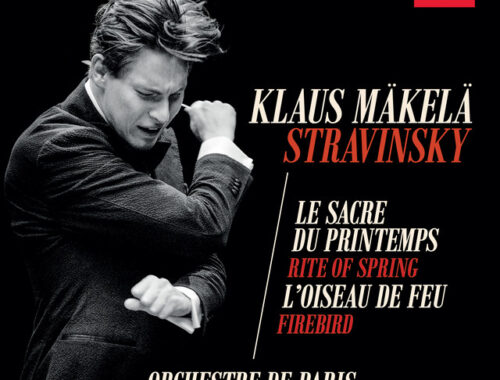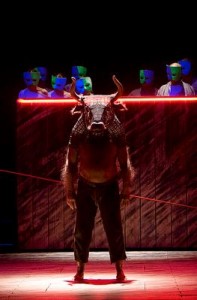Birtwistle/Harsent “The Minotaur”, Royal Opera House (Review)
Ancient myths reside in Harrison Birtwistle’s orchestral writing – and in The Minotaur, which I now believe to be the richest of all his stage works, it comes up through your body like the shifting of tectonic plates, the antiphonal percussion batteries rumbling, grinding, thundering between the stage boxes while bellowing tubas and the shrill demented dissonances of piccolo and E-flat clarinet are not so much the sounds of beasts as bestiality. The impression to our ears is of sounds evolved not created. For all Birtwistle’s compositional sophistication there is something elemental and atavistic about his writing.
But The Minotaur is enriched by a new found lyricism in Birtwistle’s vocal writing and through the poetic succinctness and haunting repetitions of David Harsent’s powerful libretto it sings a timeless song, rangy but seductive, too. The singer of that song through much of the work’s duration is the marvelous Christine Rice and in her characterisation of the wily and watchful Ariadne, half-sister to the half-man, half-beast, Asterios we have a compelling amalgam of self-interest and self-loathing. It is huge sing, this role, and in carrying all the moral dilemmas of the piece it is a role that will become much sought upon as this opera becomes, as it surely will, core repertoire in the future.
There are times, perhaps, where one wishes that Birtwistle and his librettist had heeded the startling example of Stravinsky and Cocteau in Oedipus Rex and tightened the screw on their creation. The ritual slaughter in act one of The Minotaur does not really bear repetition and renders the piece somewhat top-heavy. But then again the stark extravagance of The Minotaur – almost a contradiction in terms, you might think – takes a more grandly theatrical view of the material and Stephen Langridge’s tremendous staging offers economy and elaboration in equal measure. I love the look of the show – designer Alison Chitty – the mix of neon-edged contemporary chic and earthiness. The way sand kicks up from the forestage and the inter-scene screen offers us a window on to a black churning sea – a constant reminder of Ariadne’s isolation. And then the Labyrinth itself – a single ladder through the foundations of the stage which then becomes multiplied in the darkness where the sacrificial young men and women are picked out descending to unfathomable depths in our imagination. And at the end of that descent a tawdry arena-cum-bullring where the masked blood-lusting chorus symbolise a “civilisation” in love with death. Sound familiar?
The first appearance of the Minotaur is as inevitable as it is thrilling and one cannot really convey the unsettling feeling as the tattoo of drumming and the baying of the mob reaches a crescendo that we, too, are complicit spectators in this arena of death. We bear witness as the mythical birds of prey, the Keres (electrifyingly led by the Valkyrie-like Ker of Elizabeth Meister), with their black, broken, skeletal wings, begin their bone-picking. And as the Minotaur quietly breathes his last we are a part of that sigh from the crowd – not out of pity but because their entertainment is no more. The inescapable resonance for us is that of reality TV.
But, of course, we do feel pity for the beast – it’s an age-old formula in tales as old as time – and in that final scene where the great John Tomlinson (and who else could assume a role where every craggy cadence is his own?) finally finds the voice to express feelings of despair that he could hitherto only dream, Harsent’s words are unbearably moving. “Next to nothing”, he says of himself, and as the faceless chorus leave his carcass to rot we can at last shed a tear or two and ponder the endless cycle of revenge that begat such misery. Very familiar.
http://www.roh.org.uk/ Photo: John Tomlinson as the Minotaur, The Royal Opera season 2007/2008. Photo by Bill Cooper – more photos available hereYou May Also Like

A Conversation With MAUREEN LIPMAN
12/10/2014
GRAMOPHONE Review: Stravinsky Firebird & The Rite of Spring – Orchestre de Paris/Mäkela
18/05/2023
